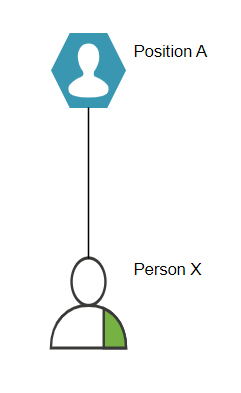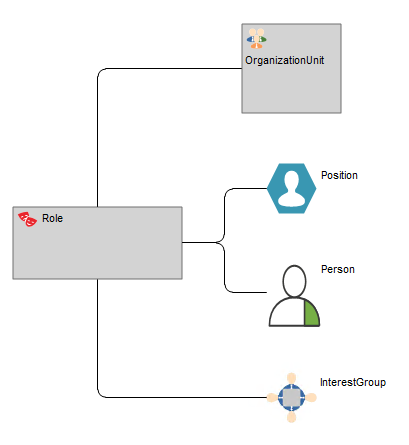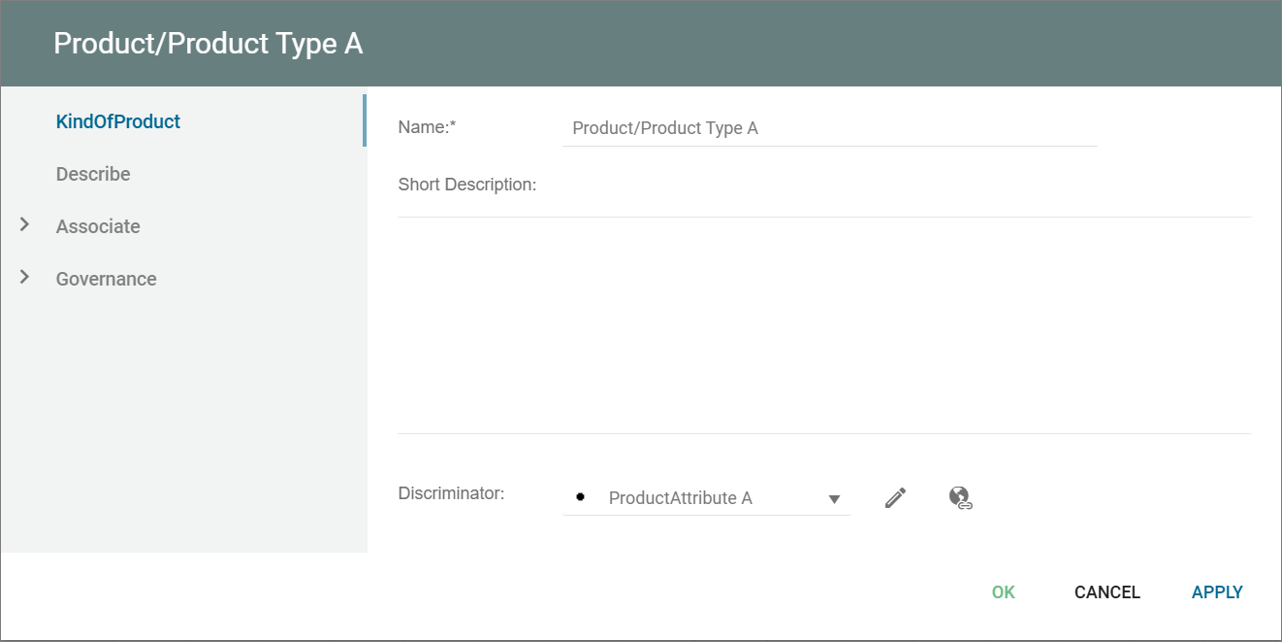The template Postion Holder is used to show relationship between a person object and a position object in an organizational diagram.

The template Postion Holder is used to show relationship between a person object and a position object in an organizational diagram.

The connection Performer is used to show relationship between a Role and a organizational object (Organizational unit, Person, Position, InterestGroup) in a diagram (e.g. organizational diagram).

Part of product in a business diagram refers to the relationship between different parts or components of a product within a larger system. A product can be any physical or digital item that is sold or used by a business, such as a piece of software, a manufactured item, or a service.
Arrows or lines may be used to show the relationships and connections between these components. For example, a line might connect a raw material to a sub-assembly to represent how the raw material is transformed into a component of the final product. Similarly, a line might connect a sub-assembly to the finished product to represent how the component is assembled into the final product.
The connection Originator is used to show relationship between a requirement object and the originator (Stakeholder, Organizational unit, Person, Position, InterestGroup) in a diagram (e.g. RequirementModel).

Similar to ControlFlow, but it carries data or objects between actions.
Message flow in a diagram refers to the exchange of messages or information between different components or entities within a system. A message can be any type of information, such as data, requests, commands, or responses.
For example, in a system where a customer places an order for a product on a website, the message flow might be illustrated through a line connecting the customer and the website to represent the submission of the order. The message flow might then continue with a line connecting the website and the warehouse to represent the order fulfillment process.
Logistical flow refers to the process of moving goods or materials through a system, from the point of origin to the point of consumption. It encompasses all the activities and processes that are required to transport, store, and distribute goods.
Logistical flow is an important concept for businesses to understand because it can impact many aspects of their operations, including costs, efficiency, and customer satisfaction. By optimizing logistical flow, businesses can reduce transportation costs, minimize inventory levels, and ensure that products are delivered to customers in a timely and reliable manner.
Knowledge Requirement in DMN (Decision Model and Notation) refers to the concept of specifying the knowledge required to make a decision within a business process. This can include the expertise, skills, or experience that is needed to support the decision-making process, as well as the sources of that knowledge.
For example, a line might connect a decision to an expert system to represent how the decision relies on expertise from that system. Similarly, a line might connect a decision tree to a decision to represent how the decision relies on a structured approach to decision-making.
This connector links two products from a more generic to a specialisation type of product.

IT support is a type of connection used in information technology (IT) management to represent the support relationship between different IT components or systems.
In IT management, different components or systems may require support from other components or systems in order to function properly. For example, an application may require support from a database system, or a server may require support from a network infrastructure. The IT support connection represents this relationship and indicates that a particular component or system is providing support to another component or system.